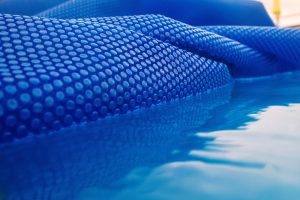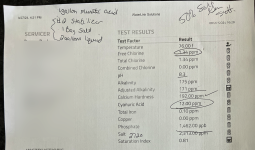Hey, Folks, I found this site after searching for places to learn about saltwater pools. Our pool guy has finished about 85% of the work but has not shown up for a few weeks and won't even reply or call us back. He rushed everything to finish the pool and left the job without educating us. We feel completely stuck with a brand-new pool. 
I have spent several hours reading on this site and watching videos to learn about the various components of the pool, and I am starting to grasp everything. To make things worse, we have plans to host a bunch of people this upcoming weekend and nervous about screwing things up.
Here is the list of the equipment that was just installed.
So far, the only measurement I have is salinity, and it's around 3000.
The SWG unit is running at 50% chlorination.
My primary questions are around these areas:
I have spent several hours reading on this site and watching videos to learn about the various components of the pool, and I am starting to grasp everything. To make things worse, we have plans to host a bunch of people this upcoming weekend and nervous about screwing things up.
Here is the list of the equipment that was just installed.
- 16x40 Fiberglass Shell. 14000 Gallons
- Jandy VSFloPro Pump 1.85 HP
- Jandy JEP-R Variable Speed Pump Controller
- Jandy 340 Sq. Ft. CV Series Cartridge Filter
- Jandy True Clear Salt Chlorinator
- Jandy JXIQ Pool Heater, 260K BTU
So far, the only measurement I have is salinity, and it's around 3000.
The SWG unit is running at 50% chlorination.
My primary questions are around these areas:
- Pump Run Time - Our pool is running 24x7 at 2810 speed. I don't know if that's good or bad, but feel like it's going to raise the electric bill through the roof. What is the recommended run time and speed(s) chart we should be following? I came across some videos that show how to set a schedule for e-star and #2 buttons.
- Multi-Port Valve—My friends all have a multi-port valve with their equipment, which allows them to backwash and use the waste function when vacuuming with a hose. Do we need that? How else do we perform maintenance functions?
- Automation—Is it difficult to install an automation system after the fact? I regret not selecting this earlier due to cost, but the convenience of operating the pool via an app would be super helpful.
- Flow meter - Are these things worth getting installed?
- Sacrificial Anode - Are these things a must-have or nice-to-have for Saltwater pools?
- Do you have any other recommendations I should consider?







